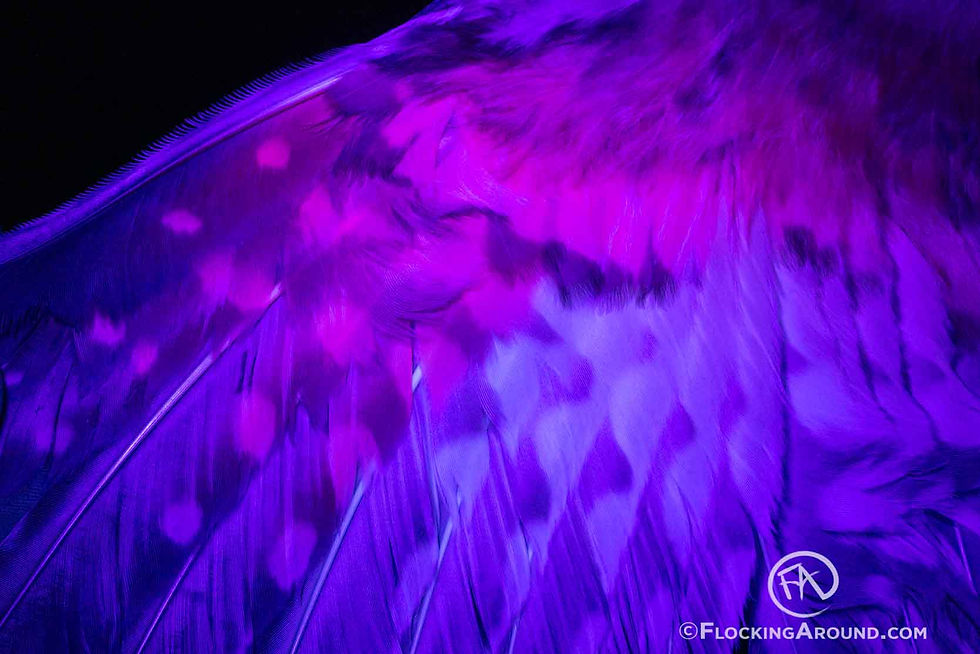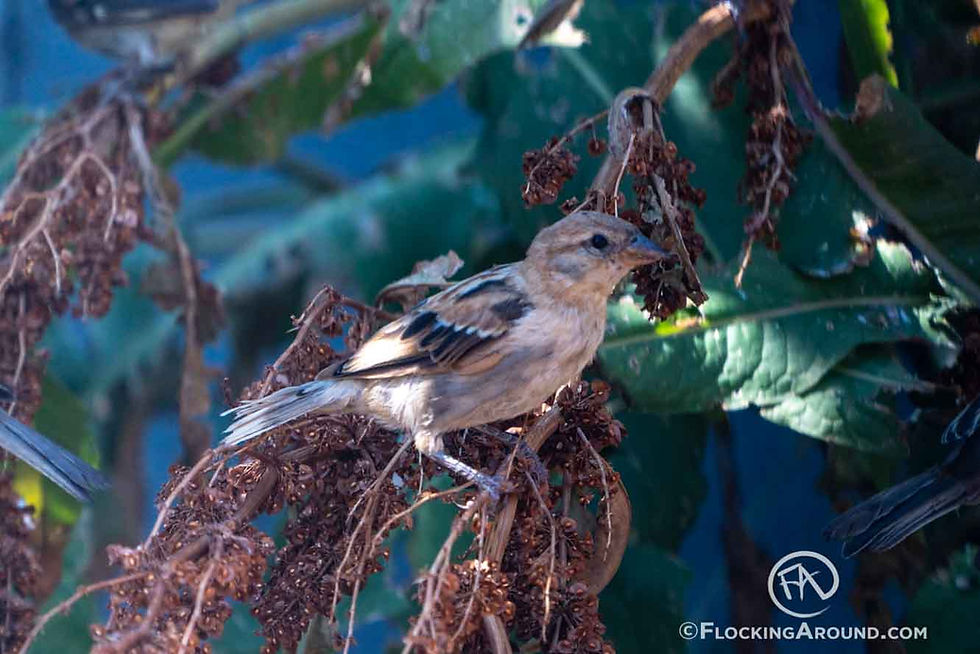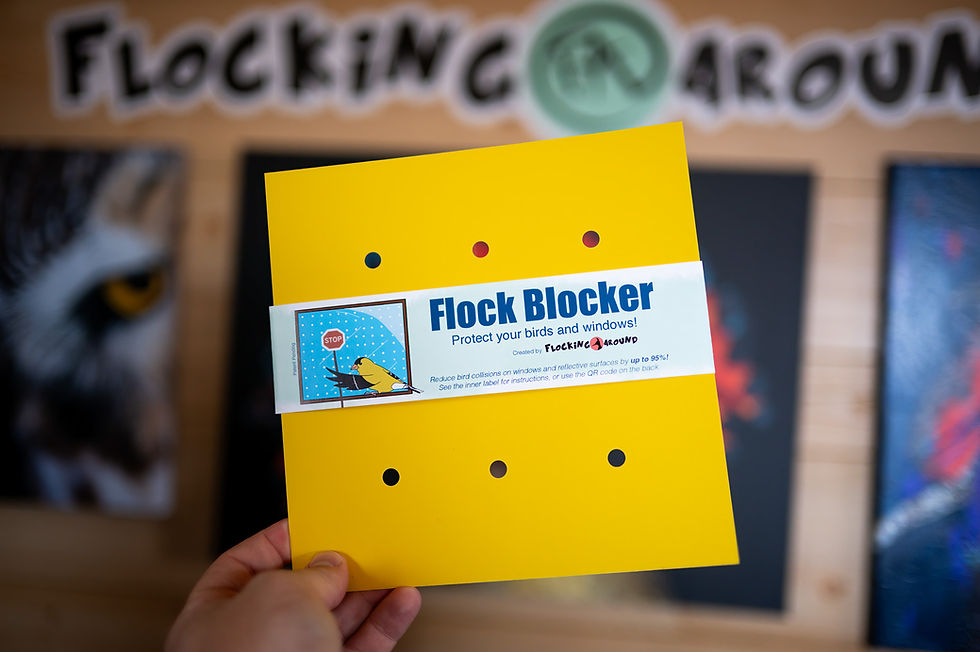The Case of the Cinnamon Wren
- Zach (Head Flocker)

- May 27, 2022
- 3 min read
I photographed these two "cinnamon" birds within two weeks of each other. What are the odds of seeing two songbirds with similar pigmentation issues? I should have bought a raffle ticket.

This House Wren was captured during MAPS bird banding efforts in Wyoming. It was a hatch-year bird, showing a plumage aberration. We promptly named it "The Cinnamon Wren."
Before we examine these two examples of unusual plumage coloration, let's establish a basic understanding of how feathers get their colors. Please, make sure to subscribe to the blog, here!
Pigment vs Structure in Birds
The colors in the feathers of a bird are formed in two different ways. For many species, feather color comes from pigments, and for others, feather color is a result of light refraction caused by the structure of the feather. In some cases, feather colors are the result of a combination of pigment and structural colors. Green-colored feathers in some parrots are the result of yellow pigments overlying the blue-reflecting characteristic of the feathers.
Today's unusually colored birds are a result of pigmentation issues, so we will not address structural coloration in this post.
Pigments in Bird Feathers
There are three "main" different classes of pigments found in birds.
Carotenoids
Melanins
Porphyrins
Carotenoids
Carotenoids are produced by plants and birds acquire them by eating something (like an insect) that has eaten the plant, or by eating a product of the plant itself. Carotenoids are responsible for reds, yellows, and oranges. A combination of pigments can create other colors, ie carotenoids + melanins = greens of the tanagers.
Melanins
Melanins occur in the skin and feathers of birds, unlike the carotenoids. They can produce colors ranging from black to reddish-brown to pale yellows. Additionally, melanins provide structure to feathers. There are many complex factors that are involved in the production of melanins but diet and hormones are both highly involved.
Porphyrins
Porphyrins are not as frequently found in the bird world. They are produced by modifying amino acids and create pinks, browns, reds, and greens. Anyone who has experienced an owl being banded might know these pigments for their ability to fluoresce bright pink or red under ultraviolet light.

Case Number Two: The Cinnamon House Sparrow

This House Sparrow was found at the feeders at my house in 2019. Like the House Wren at the start of the post, it was born in 2019. Notice its particularly pale median coverts (upper wing feathers). Its head plumage is also quite pale with the bird exhibiting a muted head pattern. This was one of two "cinnamon sparrows" in this particular flock!
The Verdict of the Unusual Plumage
I discussed these birds with someone more experienced in pigments than me. After our discussions, I continued my research online into several scholarly articles. While conditions like "leucism" can have a variety of explanations, these two cases seem fairly straightforward.
Verdict: melanin deficiency.
What caused this melanin deficiency? There are two likely scenarios.
Both birds are showing melanin deficiencies in their juvenal feathers, but their formative (teenage) feathers are more normal colored. This would seem to indicate that these individuals were getting an unusual diet at the time of feather growth. Variation in diet can lead to amino acid substitutions which result in variations in plumage coloration. Possibly these two birds were being fed a diet by their parents that resulted in this plumage? This seems most likely.
My next best guess involves an issue with the deposition of melanin on the feather, or a genetic issue leading to a specific receptor not synthesizing melanin. Basically, a chemical switch did not turn on at the right time. The final photo in this post would seem to support option one, over this much more complex scenario.
Below, note the gradual darkening in feather color, as we move proximally, or toward the bird's wing. This darkening is a result of melanin! I believe this supports the idea that the diet of the bird changed, giving the feathers the melanin(s) typically seen on House Wrens. It is possible that the "chemical switch" was flipped by a hormonal re-balance, but that also could be a result of diet.
I believe the parents feeding this bird, found a more typical food source, creating the precursors needed to make the more typical House Wren color.
Case closed.

Want more tips on birds, feeding birds, identifying birds, wildlife safety, and more?? Join our site, subscribe to our Flocking YouTube, like us on Facebook, follow us on Instagram and Twitter, and visit our Amazon Storefront.



























Comments